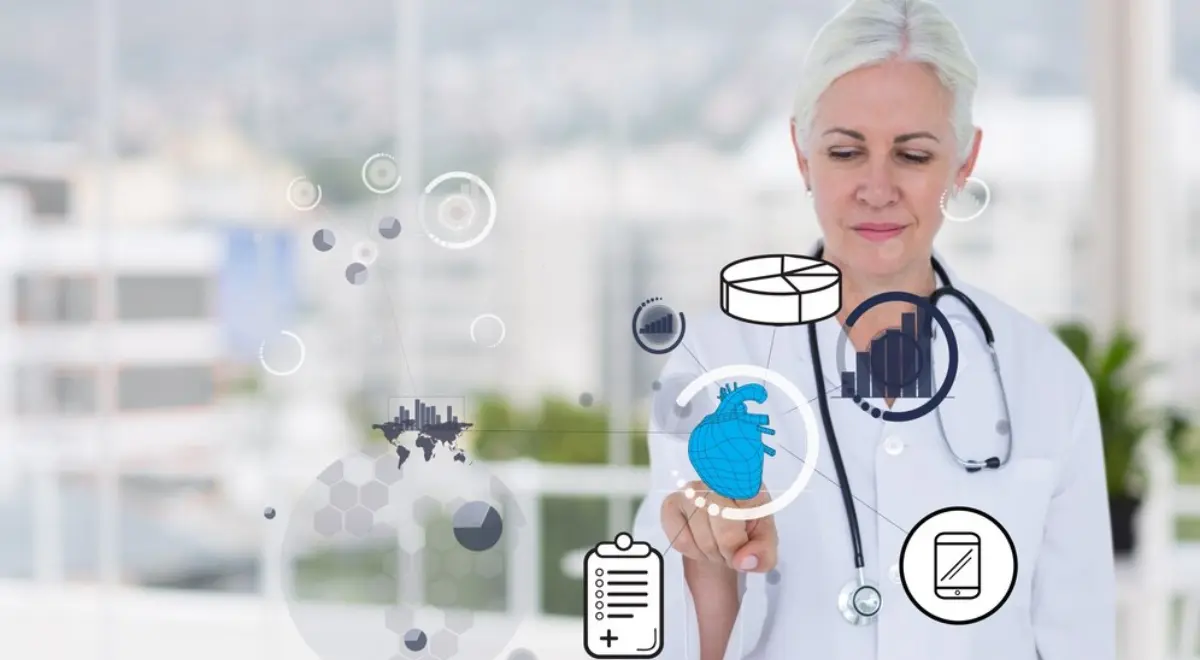Principal Care Management Comprehensive Guide: Elements and Benefits

The Centers for Medicare and Medicaid Services (CMS) proposed four new Principal Care Management CPT codes to classify care management for a single, complicated chronic disease.
These codes differ from Chronic Care Management Services(CCM), which manage two or more chronic illnesses.
These codes may be an extra revenue opportunity for allergists or healthcare professionals caring for patients with severe, high-risk asthma as they will add monthly payments exceeding ongoing E/M codes.
Table of Contents
ToggleWhat is Principal Care Management (PCM)?
Principal Care Management is a system that indexes or assigns interventions to patients with a chronic condition in the continuum of treatment and care.
It includes health checks, regular screenings, utilization assessments, event monitoring, short-term care coordination, and long-term chronic health condition management.
The eligibility condition for Principal Care Management (PCM) services can last between three months and one year or until the patient’s demise. PCM service is often initiated in response to a patient’s chronic disease progression or recent hospitalization.
Benefits and Elements of Principal Care Management Model Explained
Good care management is essential for achieving excellent health outputs and quality of life for patients. It involves identifying high-risk individuals, analyzing their needs, and creating personalized care plans that meet their unique requirements and preferences.
The PCM Model is a comprehensive healthcare approach emphasizing prevention, coordination, and patient-centered care. To understand better, read the elements and benefits of principal care management below:
Key Elements Of Principal Care Management
Several key elements to care management are vital to achieving healthcare goals. These elements include:
Providing a comprehensive assessment
Conducting a comprehensive assessment of the patient’s medical, behavioral, and social needs to inform care planning.
Creating an individual care plan
Developing an individualized care plan that addresses the patient’s needs and preferences
Engaging in patient education
Educating patients about their conditions, treatment options, and self-management strategies to improve health outcomes.
Monitoring clinical conditions
Monitoring and tracking the patient’s clinical conditions to identify changes and adjust the care plan.
Coordinating needed services
Coordinating and integrating the services and resources needed to support the patient’s health and well-being.
Benefits Of Principal Care Management
Principal Care Management has the potential to offer various advantages beyond enhancing patient outcomes, such as:
Reduced healthcare costs
Due to early detection and intervention, PCM helps avoid more costly future treatments.
Improved patient satisfaction
Helps in providing personalized and coordinated care that meets patients’ needs and preferences.
Increased access to care
Helps in providing extended hours, alternative communication methods, and community resources.
Enhanced care coordination
PCM allows health workers to collaborate with other providers and community resources to ensure patients receive the best care.
Improved population health
Helps in addressing health needs at the individual and community levels and identifying opportunities for targeted interventions.
Effective Communication in Principal Care Management
Effective communication is vital to delivering high-quality healthcare services, especially primary care management. This communication occurs between providers and patients or between healthcare providers.
The primary goal of communication in primary care is to facilitate whole-person care, which is centered on providing care within the patient’s family and community context.
Below are the five compelling reasons why communication is essential in primary care management:
Building rapport with patients
Effective communication helps build a strong rapport between the primary care provider and their patients. This trust can lead to a better understanding of the patient’s needs, values, and concerns, which is crucial in providing optimal care.
Accurate diagnosis
Proper communication ensures that patients can accurately convey their symptoms and health history to the primary care provider. It helps the provider make an accurate diagnosis and develop a customized treatment plan for the patient.
Compliance
Clear communication helps patients understand their medical conditions, treatment options, and the need for follow-up appointments. It ensures that patients comply with the treatment plan, which leads to better health outcomes.
Preventing medical errors
Effective communication between the primary care provider and other healthcare specialists involved in the patient’s care, such as specialists and pharmacists, reduces the risk of medical errors. It ensures everyone involved in the patient’s care is on the same page.
Patient satisfaction
Good communication leads to increased patient satisfaction. Patients who feel heard and understood have higher satisfaction with their medical treatment and improved health outcomes.
Challenges and Barriers to Effective Principal Care Management
Making the most of primary care is about proactively preventing health issues and intervening early to avoid hospitalization.
But unfortunately, several hurdles can get in the way of effective primary care management. Here are some of the most typical barriers you might encounter:
Inadequate Choice
Many patients cannot access the physician best suited to their needs. In some regions, there is a lack of choice, limiting primary care’s benefits.
Patients should be able to select a general practitioner that aligns with their healthcare needs.
Variable Quality
Primary care quality varies significantly between different practitioners and regions. In some areas, patients may not receive the full benefits of primary care due to poor quality.
Performance-based incentives, peer-reviewing, or losing contracts in severe circumstances may help improve quality.
Physician Shortage
The public’s primary healthcare demands require adequate physicians to provide quality care. However, the supply of physicians is currently not keeping up with the growing healthcare demands.
Several approaches should be combined to address this issue, such as increasing physician training, improving workplace systems, and increasing care efficiency.
Limited Access to Advanced Technologies
Some primary care practices are still not fully utilizing advanced technologies, such as electronic health records, telehealth, and AI-powered tools. These tools can significantly improve primary care management’s efficiency and effectiveness.
Access to these technologies can limit primary care’s benefits to patients. To address this issue, primary care practices must invest in and utilize advanced technologies to enhance patient care and management.
How to Maximize Your Revenue and Improve Patient Health Outcomes with PCM
In today’s healthcare landscape, providers constantly seek ways to increase revenue and improve patient outcomes. One powerful system that has emerged recently is Principal Care Management (PCM), which leverages technology and patient data to help providers deliver more targeted and effective care.
Providers must focus on several key strategies to maximize revenue and improve patient health outcomes with PCM. First, they must collect and analyze the right data to identify high-risk patients and tailor care plans to their unique needs.
Next, they should work to streamline their care delivery processes and leverage technology wherever possible to improve efficiency and reduce costs.
Other important tactics for maximizing revenue and improving patient outcomes with PCM include:
- Engaging patients in their care.
- Collaborating closely with other providers and stakeholders.
- Continually measuring and refining care strategies based on outcomes data
By following these best practices and utilizing healthcare management software, providers can unlock the full potential of PCM and deliver better care to their patients while driving greater financial success for their practices.
Principal Care Management CPT Codes
The four new CMS Principal Care Management codes compensate physicians’ extra hours caring for high-risk, complex patients.
These include the additional time and effort required for changing prescriptions, developing a care plan, patient follow-up, and other duties.
The new Principal Care Management CMS codes, which became effective from Jan. 1, are described as follows:
99424 (Services for Initial 30 Minutes by Physician)
- For a single chronic condition
- Per calendar month, services are provided for the first 30 minutes by a physician or other certified healthcare practitioner.
99425 (Services for Each Additional 30 Minutes by Physician)
- For a single chronic illness
- Per calendar month, services are provided by a physician or other competent healthcare practitioner for each extra 30 minutes after 99424.
99426 (Services for Initial 30 Minutes by Clinical Staff Time)
- For a single chronic ailment
- Initial 30 minutes of clinical staff service time per calendar month, as directed by a physician or other authorized healthcare provider.
99427 (Services for Each Additional 30 Minutes by Clinical Staff Time)
- For a single chronic disease
- Additional 30 minutes of service time, after 99426 ,each calendar month guided by a physician or other competent healthcare practitioner.
How Does Principal Care Management Work?
First, a certified health care professional (typically a physician, nurse practitioner or physician assistant) develops a disease-specific treatment plan and then makes any required changes.
These continuing modifications are anticipated and incorporated into the payment standards; for example, qualifying conditions are specified as needful “frequent revisions in the pharmaceutical regimen.”
Following that, clinical personnel, such as nurses, operate under the supervision of a physician or certified health care practitioner to carry out the treatment plan.
These include explicitly monitoring and managing the patient’s condition and medicines, regular contact, coordination with the patient, and other day-to-day delivery duties.
4 Benefits of HealthArc – CMS Principal Care Management
There are benefits of Principal Care Management for both patients and healthcare providers. Let’s look at the advantages of adopting HealthArc software for PCM services:
- Effective Care Plan Generation with EHR Integration
Develop, modify, and update patient-centered care plans easily. HealthArc seamlessly integrates with the market’s top 55 EHRs. Aside from EHRs, HealthArc connects with any device that supports external APIs, such as Bluetooth or cellular devices.
- Supports Multiple Conditions
HealthArc is a clinician-friendly software that is designed to improve health standards and help you address the requirements of patients comprehensively by analyzing respiratory system status, musculoskeletal system status, and therapy compliances.
- Improves Clinical Decision Support
HealthArc has a dedicated Security & Compliance team to ensure privacy is incorporated into our staff, systems, and third-party interactions. All our components, including the patient interaction module, SMS, and in-app messaging, are HIPAA compliant.
- Concurrent Billing with Other Services – RPM, RTM & TCM
The HealthArc platform allows providers to simultaneously provide RPM, RTM, and TCM care management services. Principal Care Management can be billed concurrently with remote patient monitoring as long as the monitored time is not billed twice.
What are Principal Care Management Guidelines?
Patients covered by PCM codes must fulfill the following principal care management guidelines defined by CMS:
- They must have a long-term chronic illness that has lasted at least three months.
- The patient’s condition is bad enough that they are at risk of being admitted to the hospital or have already been admitted.
- A disease-specific care plan must be developed or revised for this illness.
- The disease necessitates a regular drug regimen, or the condition care is extremely complicated due to co-diagnoses.
Clinics must document the following when invoicing these codes:
- The records of communication and care coordination between specialists and patients are ongoing.
- To fulfill the requirements listed above. The patient’s file should include the disease-specific treatment plan, as well as documentation of medication modifications, patient communications, and so on.
- The amount of time spent each month providing care.
CMS Principal Care Management Codes and Reimbursement
| CPT Code | Billable Time | Reimbursement Rate |
| 99424 | 30 min | $83.40 |
| 99425 | 60 min | $60.22 |
| 99426 | 30 min | $63.33 |
| 99427 | 60 min | $48.45 |
Time spent by a physician or other authorized health care practitioner is coded as CPT codes 99424 and 99425.
Clinical staff time directed by a physician or other authorized health care professional is coded as CPT codes 99426 and 99427.
It is also worth mentioning that the time spent by providers and clinical personnel need not be face-to-face. It can include setting up care plans, calling patients for follow-up, etc.
How to Bill and Claim for Principal Care Management
When submitting a claim using CMS, you must provide the following from your records:
- CPT codes for each program you’re in charge of and ICD-10 codes for each of the conditions you’re in charge of.
- Service start date
- Service location
- Name of the service provider
While it isn’t required, knowing the care manager assigned to a patient is useful in the event of an audit: When it comes to billing, you’ll keep track of the time you spend with each of your patients every month.
When billing, you’ll follow these four steps:
- Each month, double-check that CMS standards were satisfied for each patient.
- Must submit CMS claims every month.
- Patients who get CCM services should receive a monthly invoice.
- Make sure no conflicting codes are billed.
FAQ for Principal Care Management CPT Codes
- When should I not bill these codes?
Never bill these codes in case:
- Medically dedicated staff itself provides chronic care management and not some chronic care management provider (use 99439, 99490)
- Consultation of less than 30 minutes is given to the patient
- Consultations are more than two within one month
- Given time goes under transitional care management services (99495-99496)
- What is the ROI of a Principal Care Management Program?
ROI is often seen in terms of finance gained back, whereas the ROI of the Principal Care Management Program lies more in terms of benefits. PCM provides a preventive eye on patients. Their well-being can be monitored, and advanced measures can be taken in light of any fluctuations in the vitals to abnormal values.
- How does Principal Care Management Program help in improving the quality of care my practice provides?
CCM lets you provide care to patients within their homes. This helps reduce the service burden on your staff and facilities. With lesser or shared burden, you can utilize and allocate your resources more skillfully, focusing on improving the quality of care you and your practice can provide.
- How does Principal Care Management Program help in reducing the burden of chronic conditions?
Chronic illnesses need immediate attention when there’s a rise in illness. When the symptoms go away, some constant monitoring is still needed.
Principal Care Management Program provides help in addressing the broad implications of chronic diseases. Thus, the burden of chronic conditions and additional illnesses and health complications reduces.
- How does Principal Care Management Program help in improving MPIS scores?
Principal Care Management Program helps in reducing the patient’s emergency visits. The extent of preventive care through the Principal Care Management Program helps in reducing the occurrence of the medical condition.
With a reduction in patient visits, some essential criteria of performance indicators measured by Medicare stay well within limits, thus helping you in keeping and improving your Merit-based Incentive Payment System (MIPS) score.
A good MPIS score further increases your reimbursement rate.
- How does Principal Care Management Program help in improving patient relations and care experience?
Principal Care Management Program allows meeting patients on a monthly basis. Meeting patients frequently, almost every month strengthens the bond with them. Patient engagement improves and thus results in a better care experience and more trust.
Conclusion: Maximize Your Revenue & Revamp Principal Management Care Services With HealthArc
Indeed, as a healthcare practitioner, you aim to provide the best healthcare to patients. Of course, you want to receive fair compensation for the services provided.
You will need a program management system to offer and document primary care services.
A useful solution, such as healthcare management software, will prevent important facts from being lost or overlooked. These will increase efficiency for you and your staff while helping patients succeed.
Healthcare management software can help create patient care plans, staffing procedures, and billing. HealthArc software solutions provide these special features and many more.
HealthArc’s comprehensive approach to Principal Care Management enables providers to deliver care management services for their patients suffering from specific chronic illnesses by enhancing the quality metrics of their healthcare while generating healthy revenue.
Schedule a demo today to learn more about billing and reimbursement principal care management CMS CPT codes.
Most recent blogs
Categories
- Behavioral Health Integration
- Cellular Remote Patient Monitoring
- Chronic Care Management
- Chronic Care Management Billing
- Chronic Care Management CPT Codes
- Chronic Care Management Program
- Chronic Care Management Software
- Digital Health Platform
- Principal Care Management
- Principal Care Management CPT Codes
- Remote Monitoring Devices
- Remote Patient Care
- Remote Patient Monitoring
- Remote Patient Monitoring Billing
- Remote Patient Monitoring CPT Codes
- Remote Patient Monitoring Devices
- Remote Patient Software
- Remote Therapeutic Monitoring
- Remote Therapeutic Monitoring Billing
- Remote Therapeutic Monitoring CPT Codes
- Telemedicine & RPM
- Transitional Care Management
- Transitional Care Management Billing
- Transitional Care Management CPT Codes
Related Posts
- June 21, 2024 | Read Time: 5 mins
Remote Care Programs Covered By HealthArc’s Digital Health Platform
- February 2, 2024 | Read Time: 5 mins





